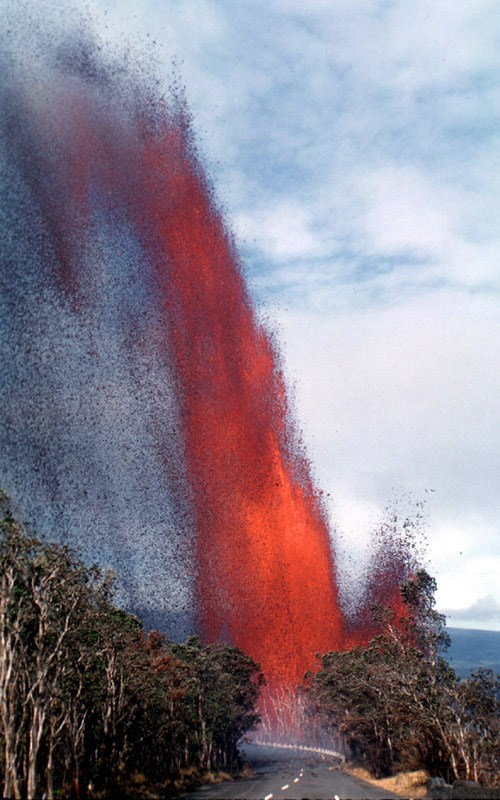
Kīlauea Iki crater may look tranquil these days. But in 1959, this now 400-foot (120 m) crater held a seething lava lake that spewed fountains of molten lava thousands of feet into the air. Considered by some to be the most spectacular eruption event of the 20th century, Kīlauea Iki provided a unique opportunity for geologists to study the plumbing system of Kīlauea volcano. Geologists began to anticipate an eruption in the middle of August 1959 when the Hawaiian Volcano Observatory (HVO) recorded deep earthquakes within Kīlauea volcano. By October, HVO measured a signficant inflation at the summit due to the pressurization and “filling” of magma into its reservoir. By the next month, activity had dramatically increased and there were thousands of earthquakes being recorded everyday - a clear indication that magma was on a path to the surface. The frequency and intensity of the earthquakes increased up to the start of the eruption on November 14. 
Imagine standing at the edge of the scenic Kīlauea Iki Overlook and witnessing the sudden, deafening roar of red-hot lava blasting skyward. The eruption began when a curtain of lava burst from a half-mile (0.8 km) long fissure, or crack, along the forested crater wall. Within a day, multiple vents along the fissure consolidated into one main vent. Over the next five weeks, fountains of lava gushed from the vent in 17 separate episodes. The highest of these fountains was a record 1,900 feet (580 m) high. Molten rock flooded the crater, creating a lake of lava that rose halfway up the crater walls, burying the initial fissure. Within days, tephra from the fountains of lava congealed to form a brand new cinder cone called Puʻupuaʻi (translates to “gushing hill”). As cinder and spatter rapidly accumulated to form Puʻupua‘i, slabs of congealed spatter occasionally broke loose and slid down the cone into the churning lava lake. 
(Top: NPS Photo/R. Haugen, middle and right: USGS/D. Richter)
Additional Resources:
|
Last updated: February 1, 2022
